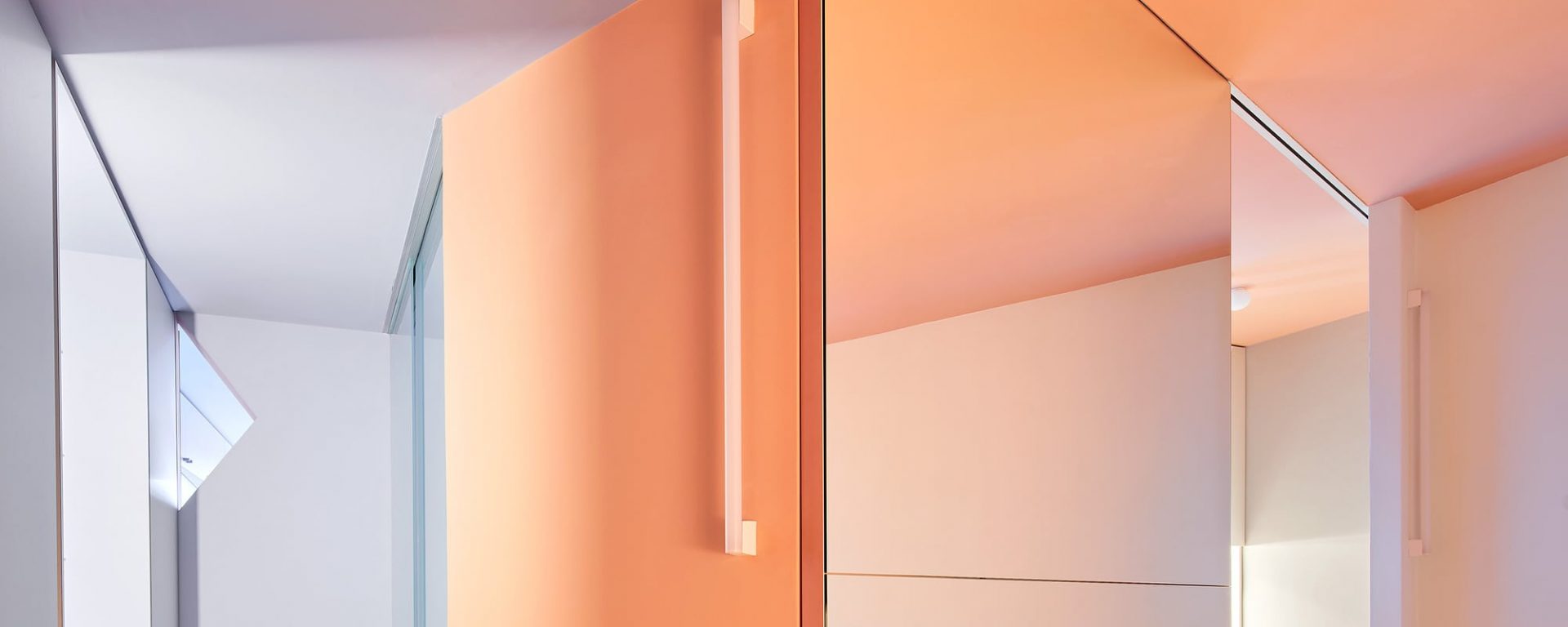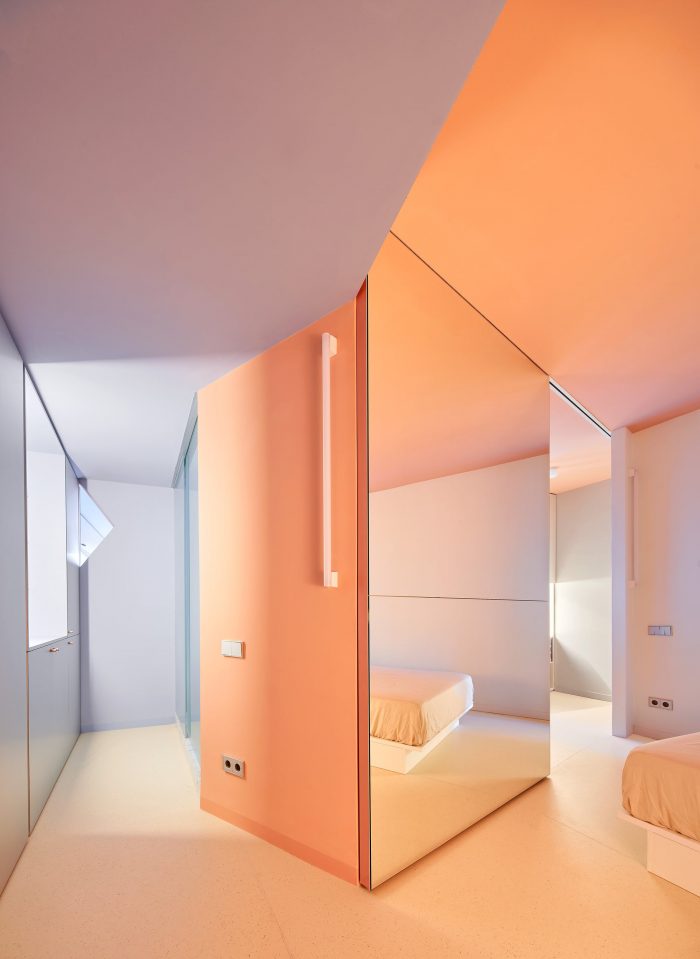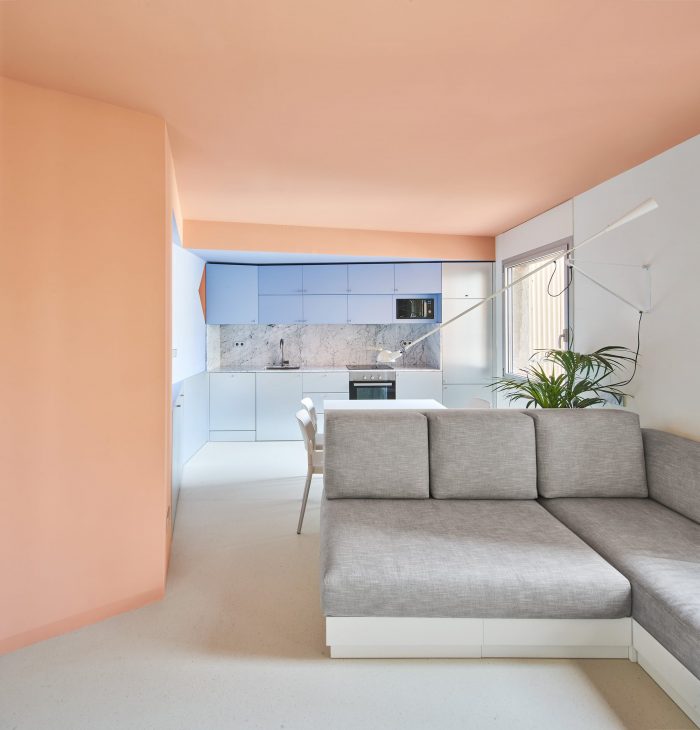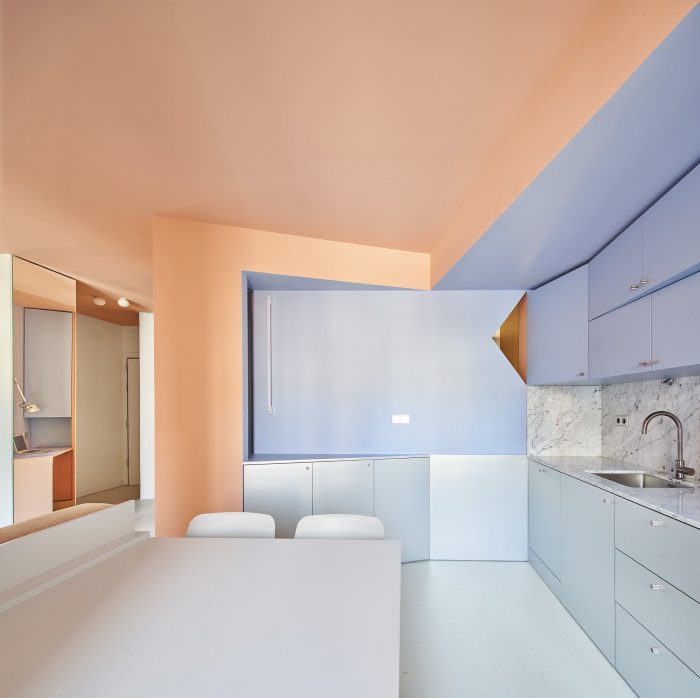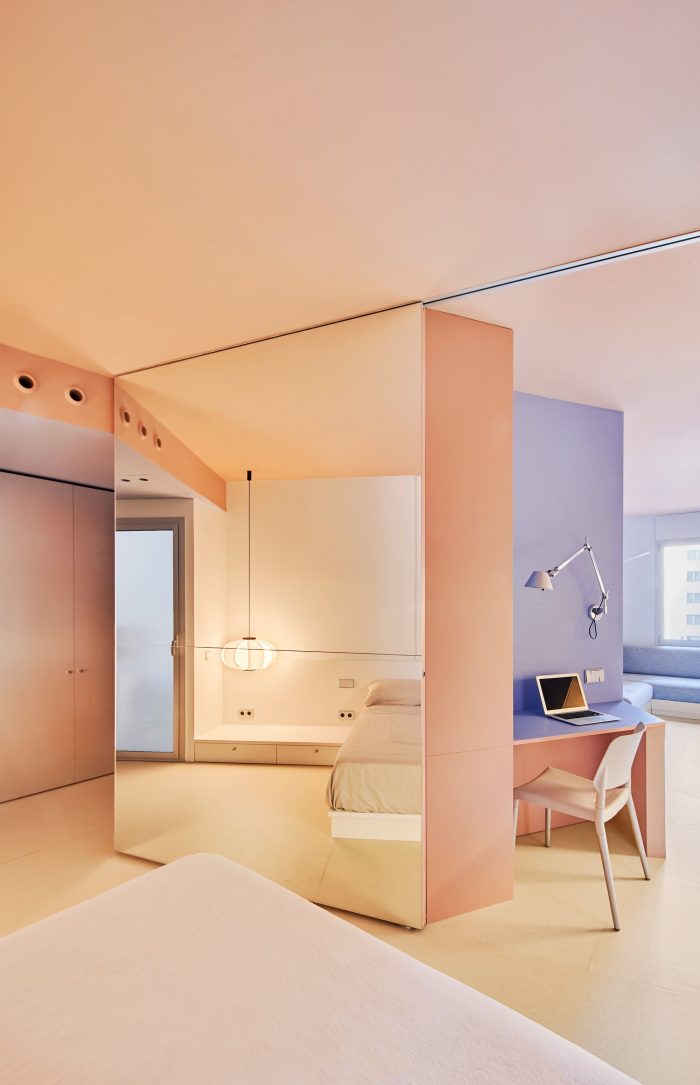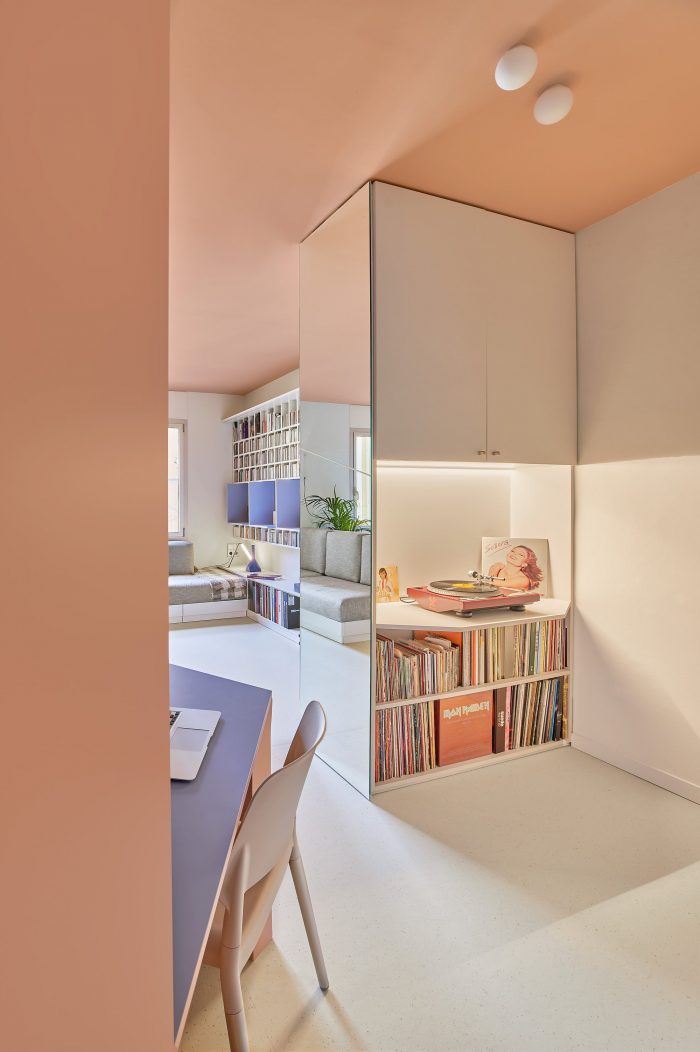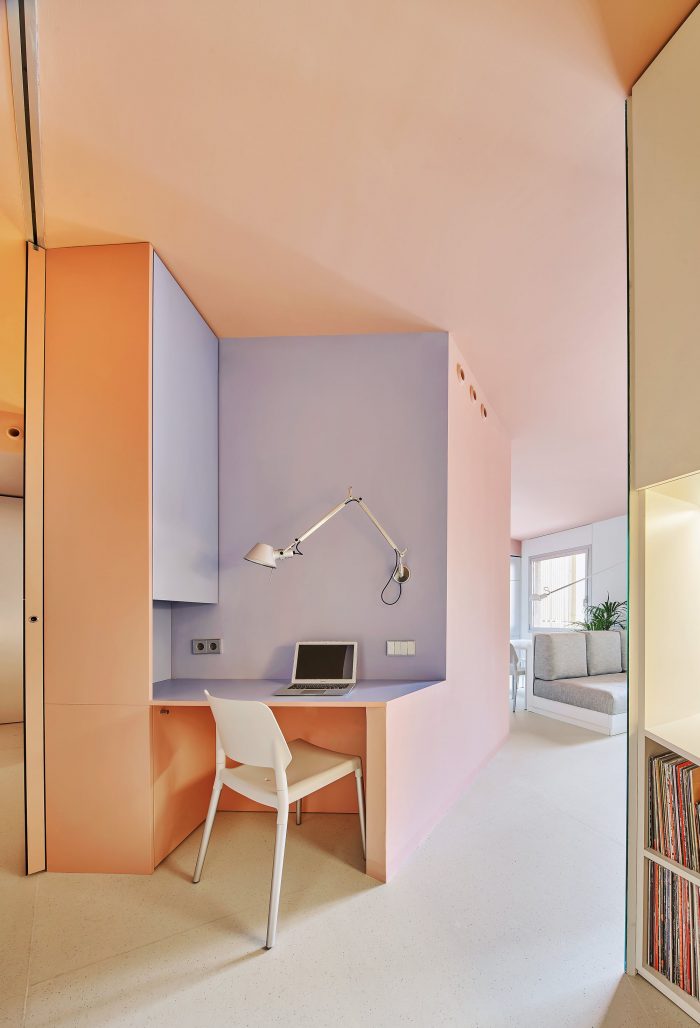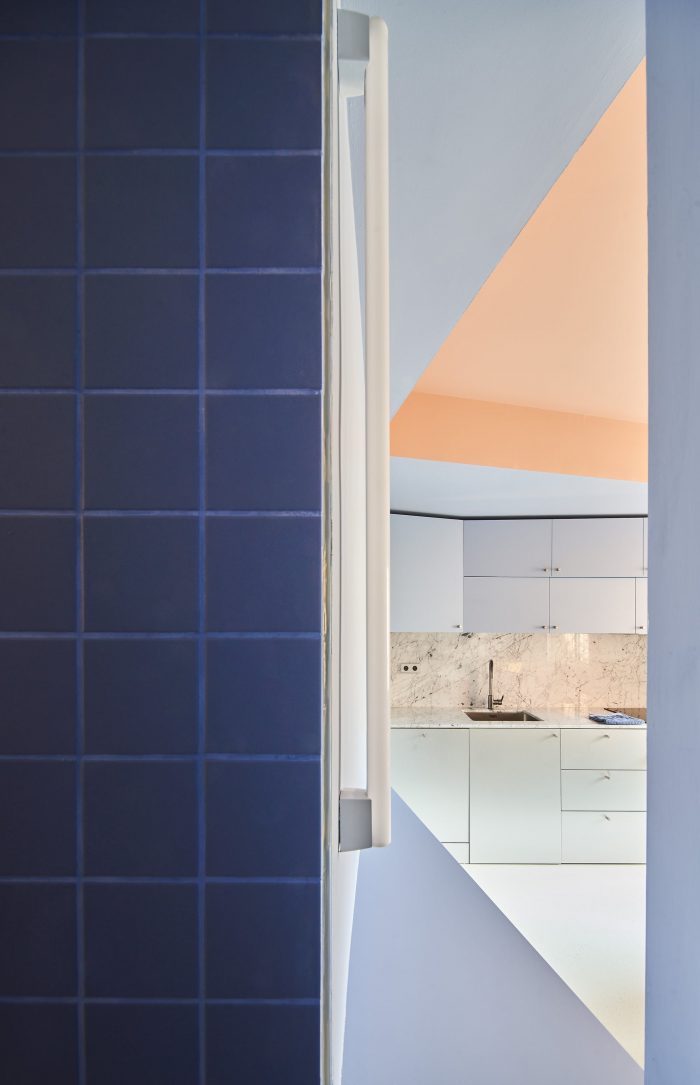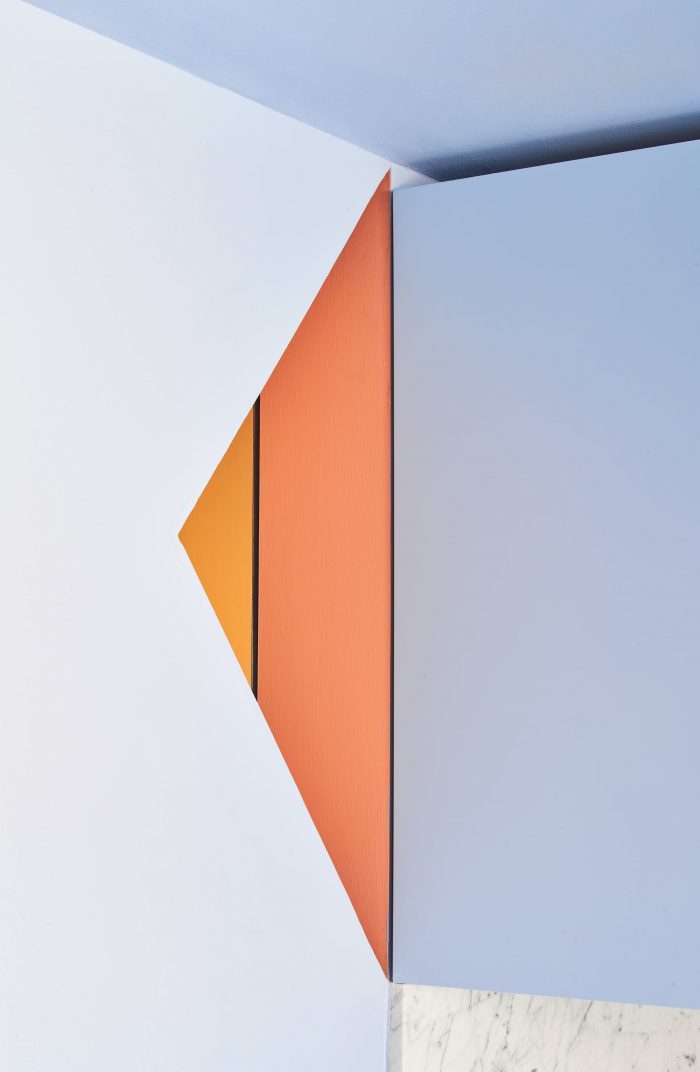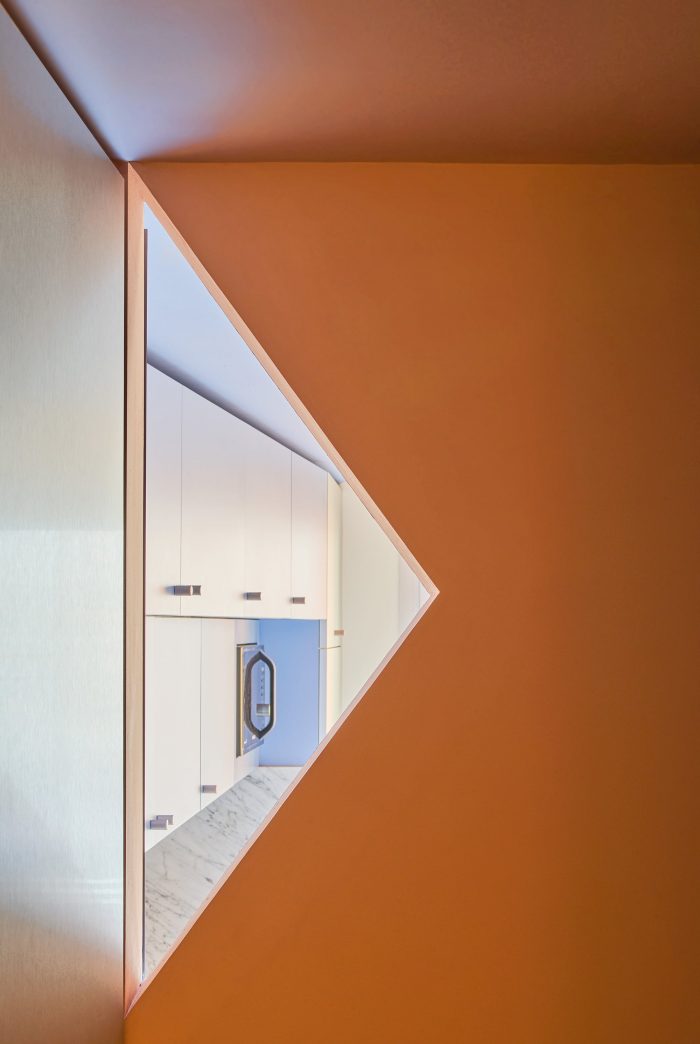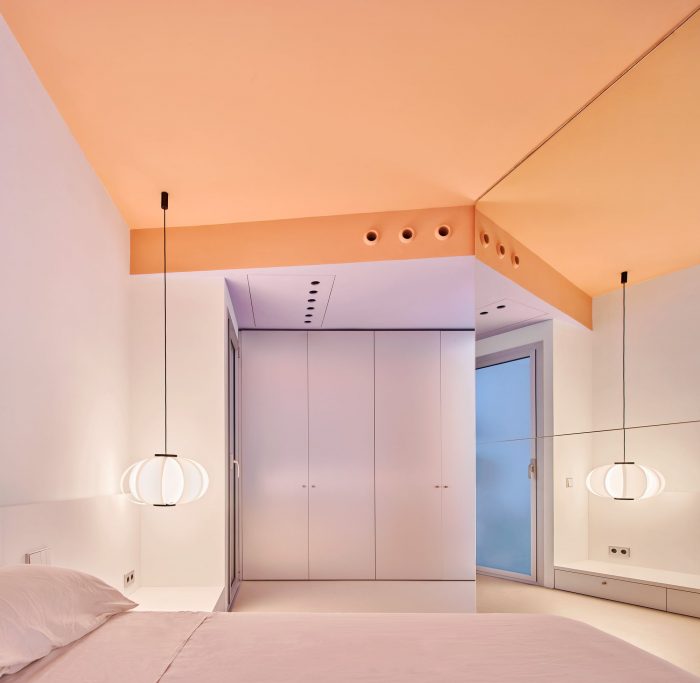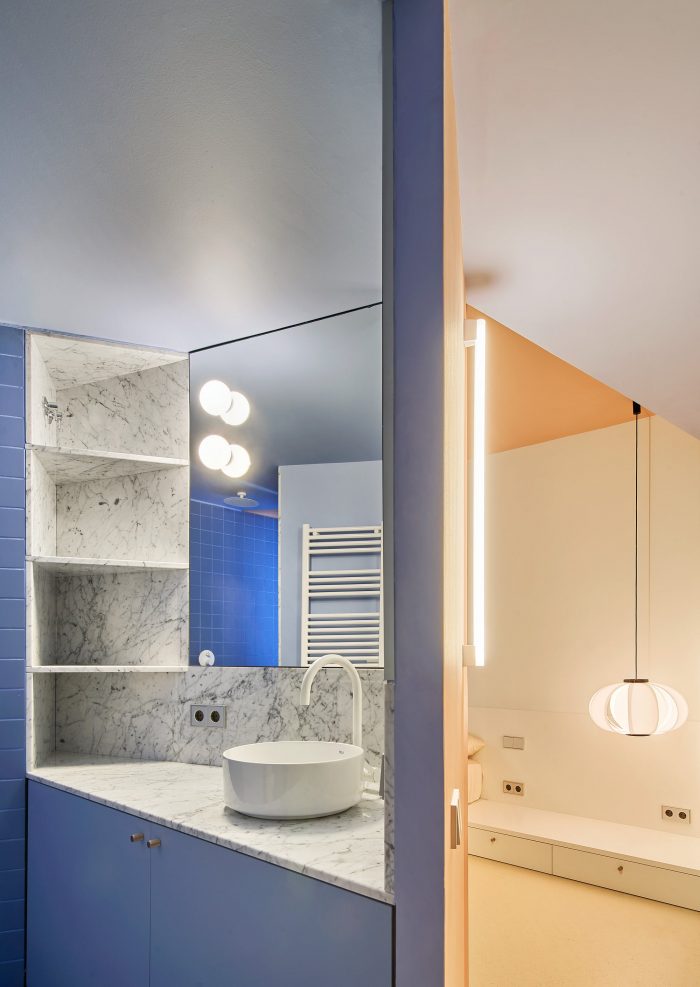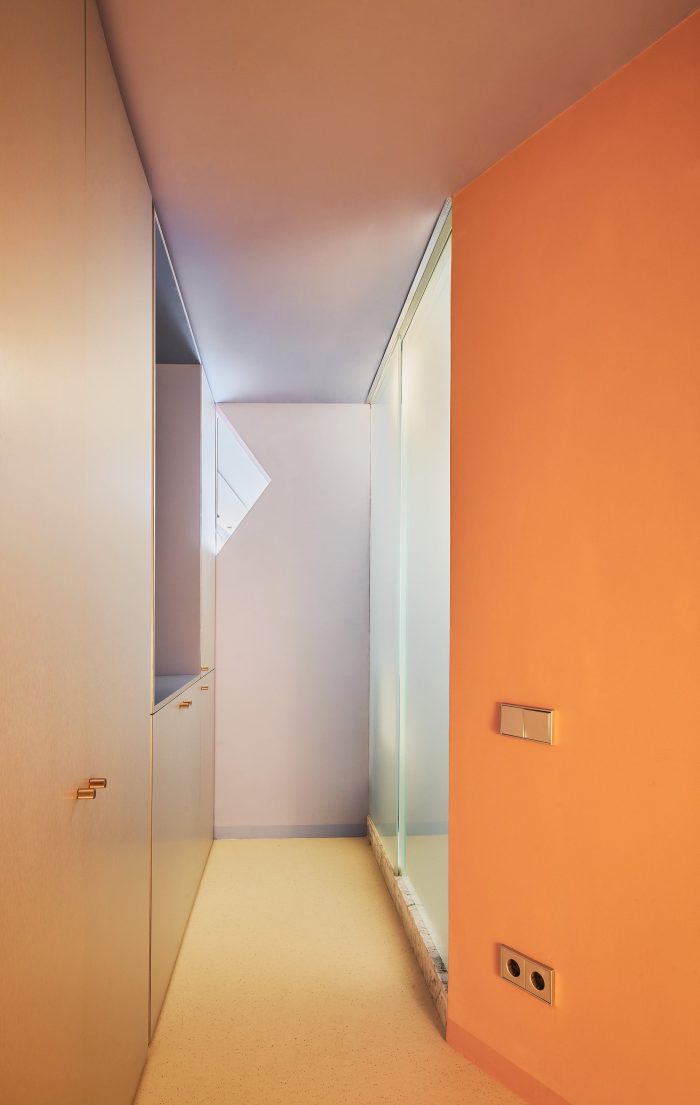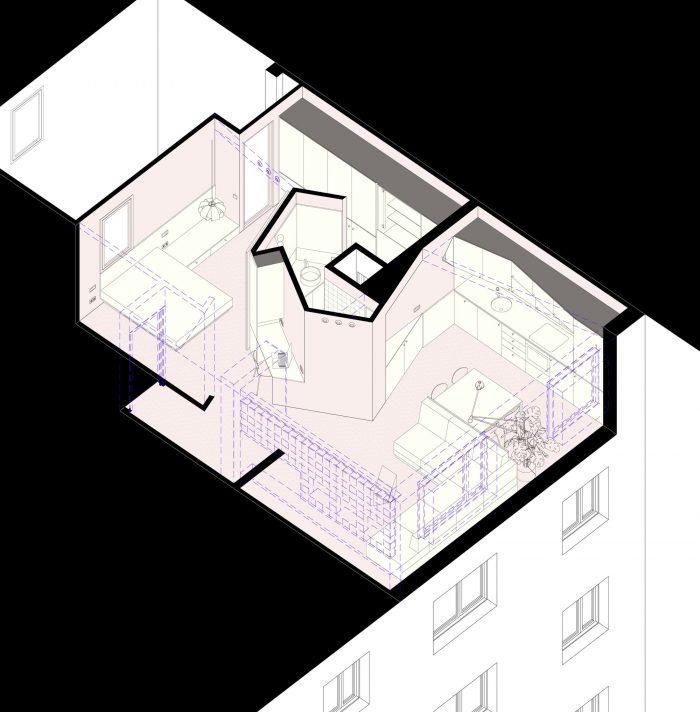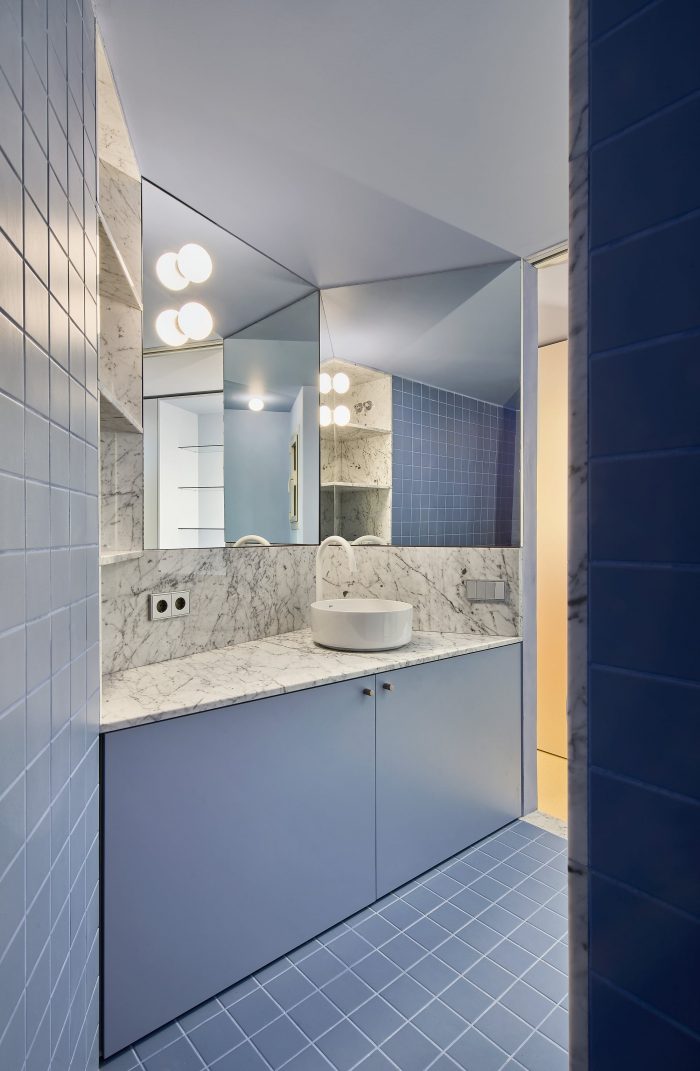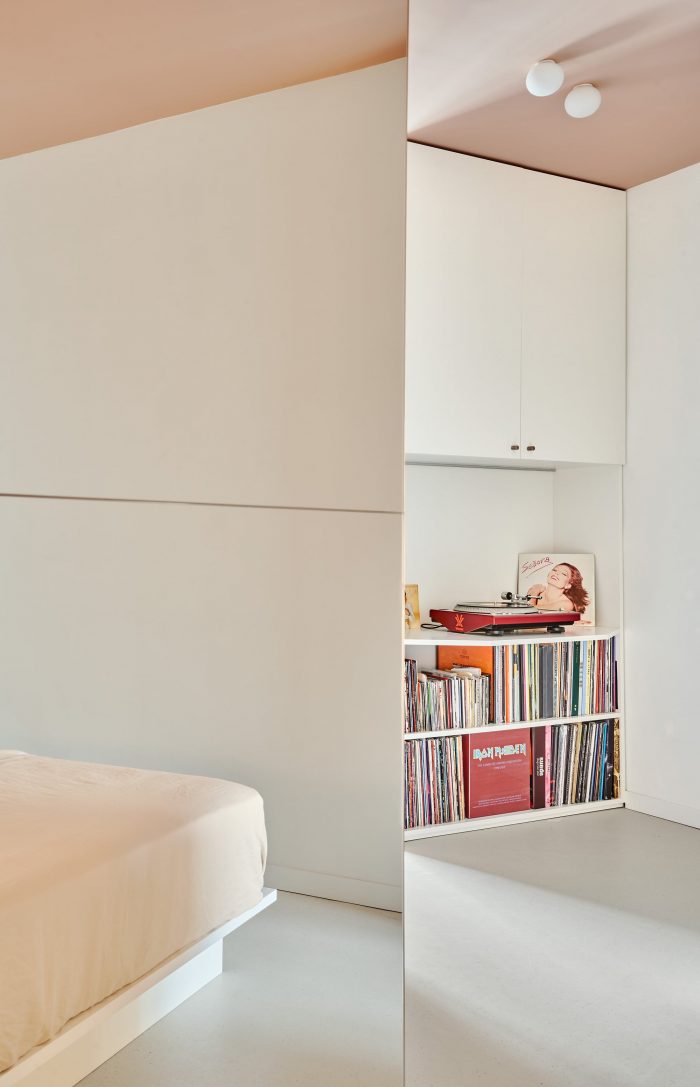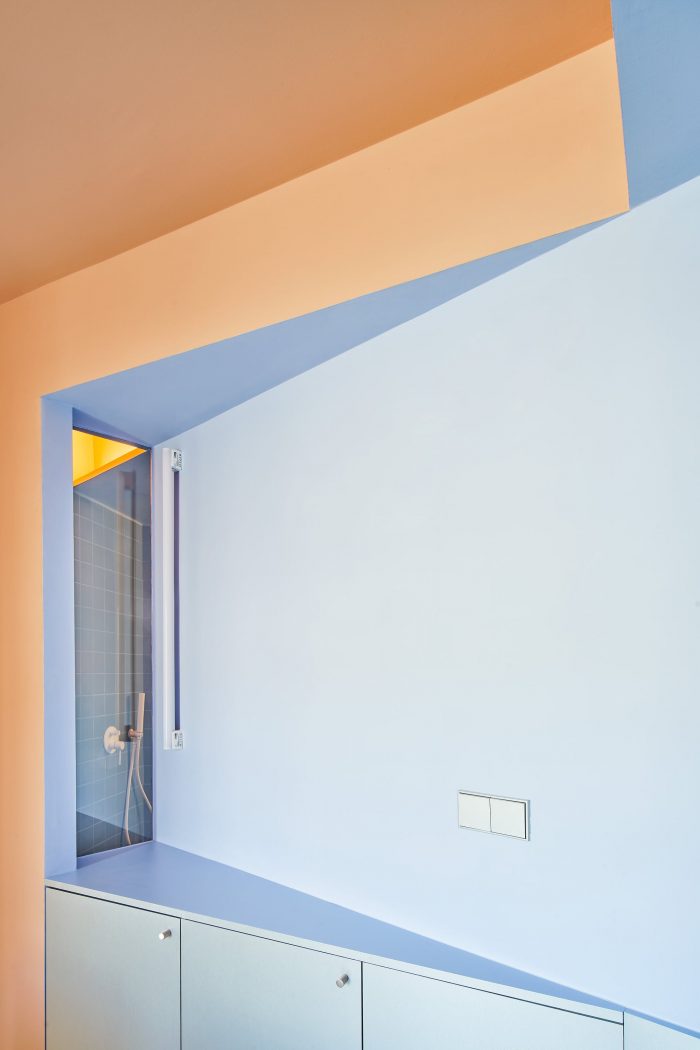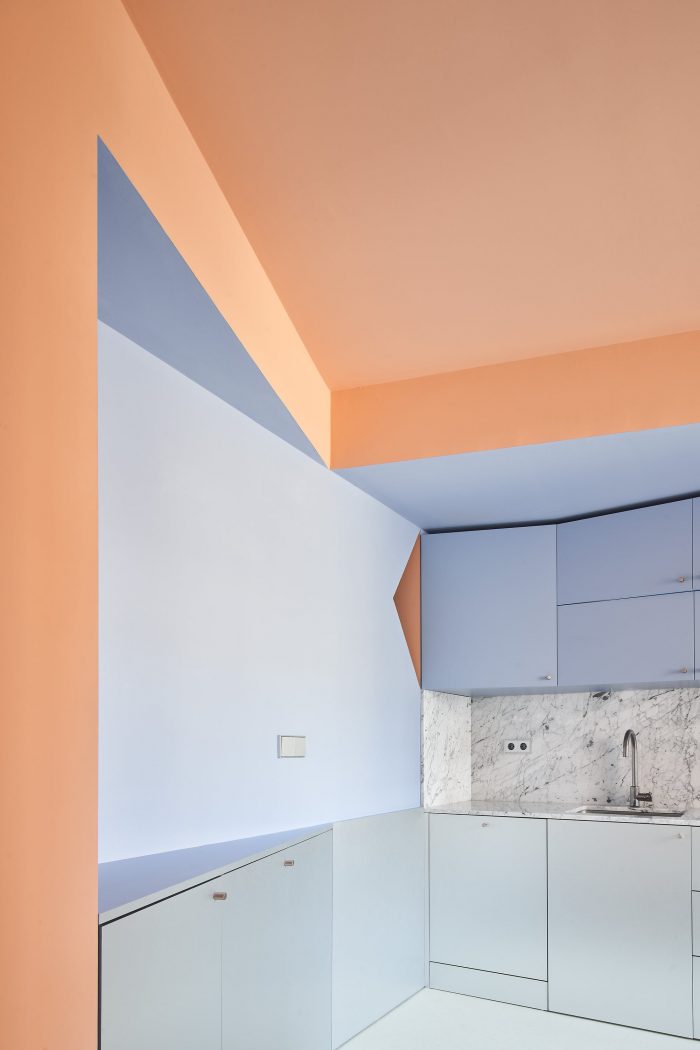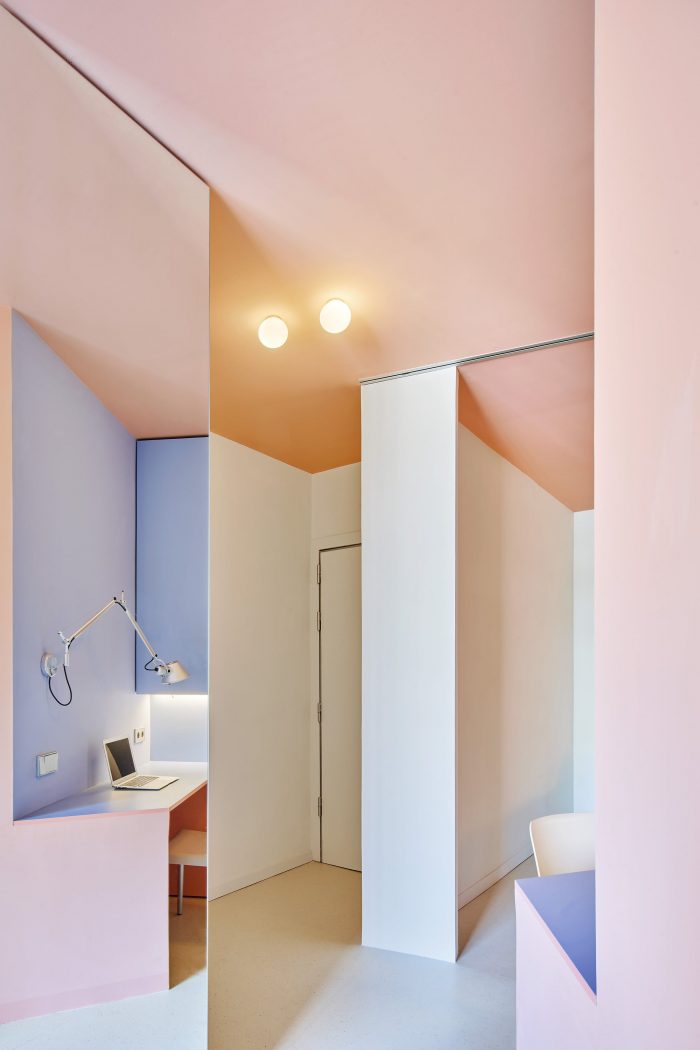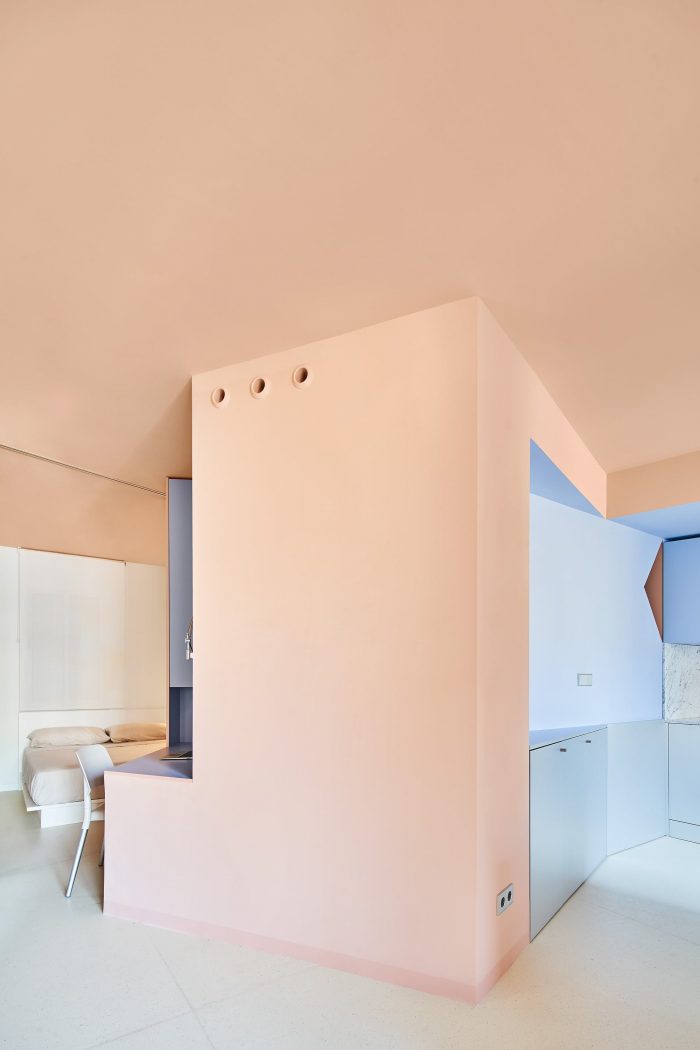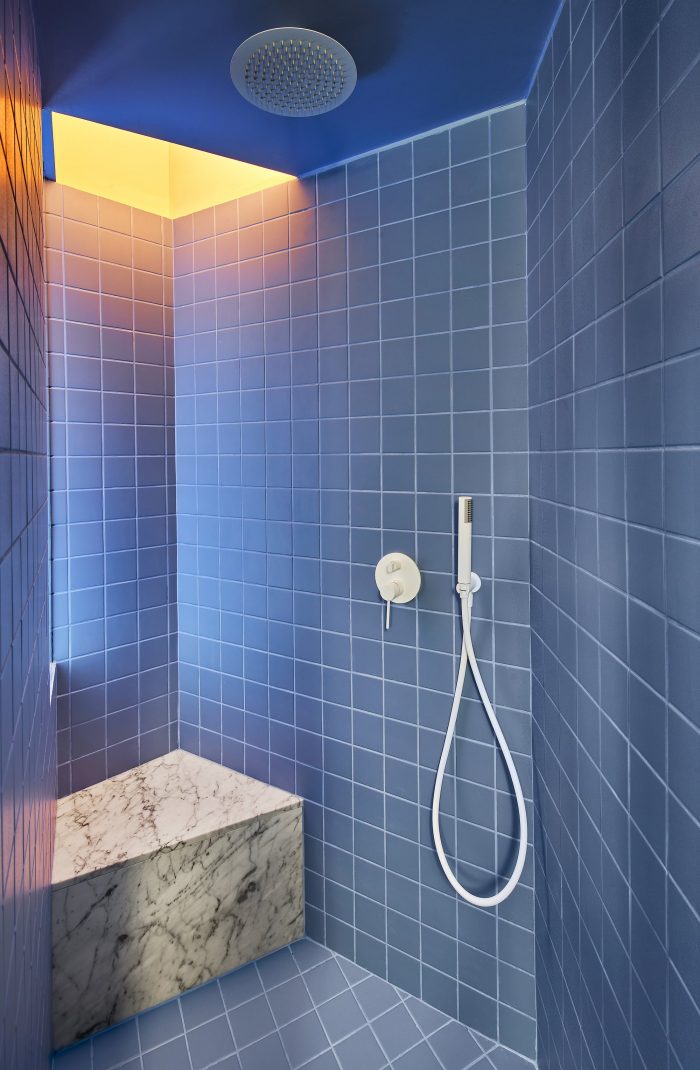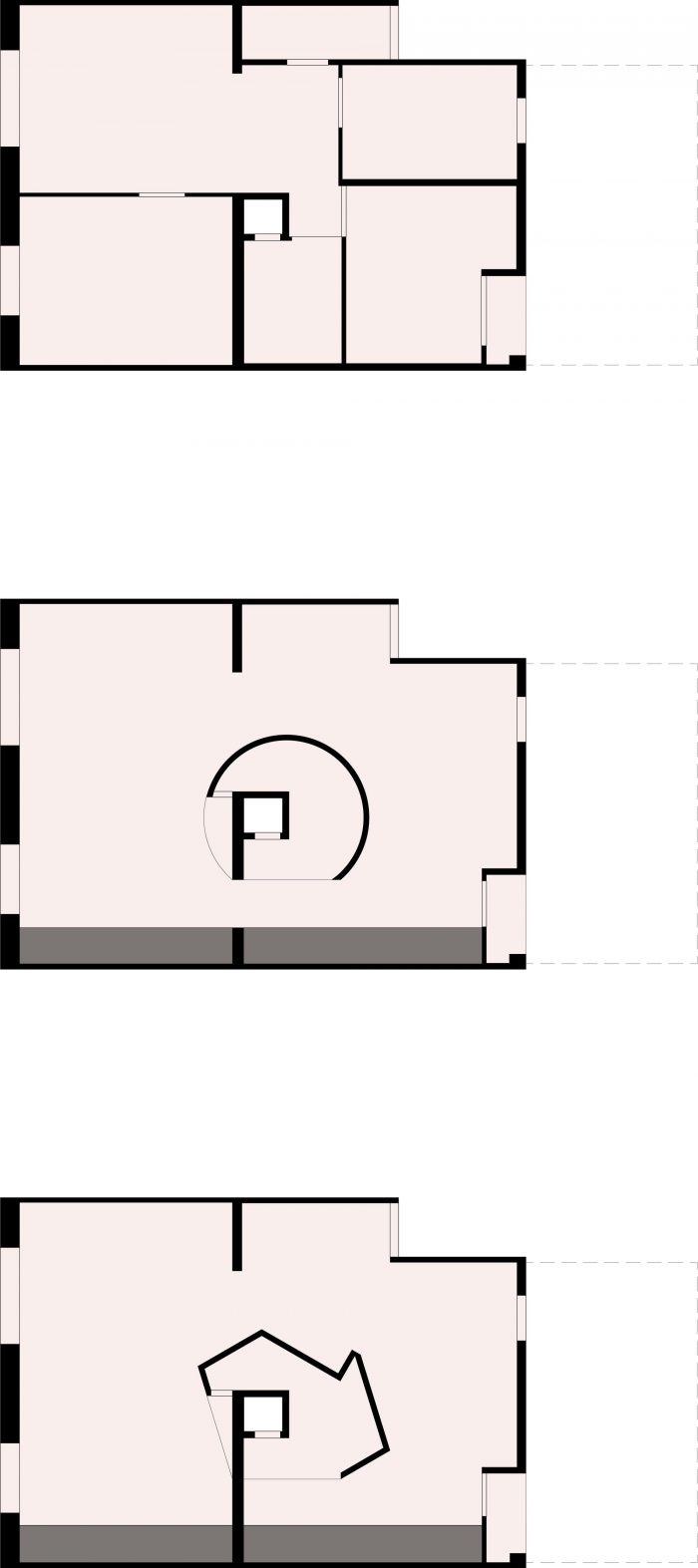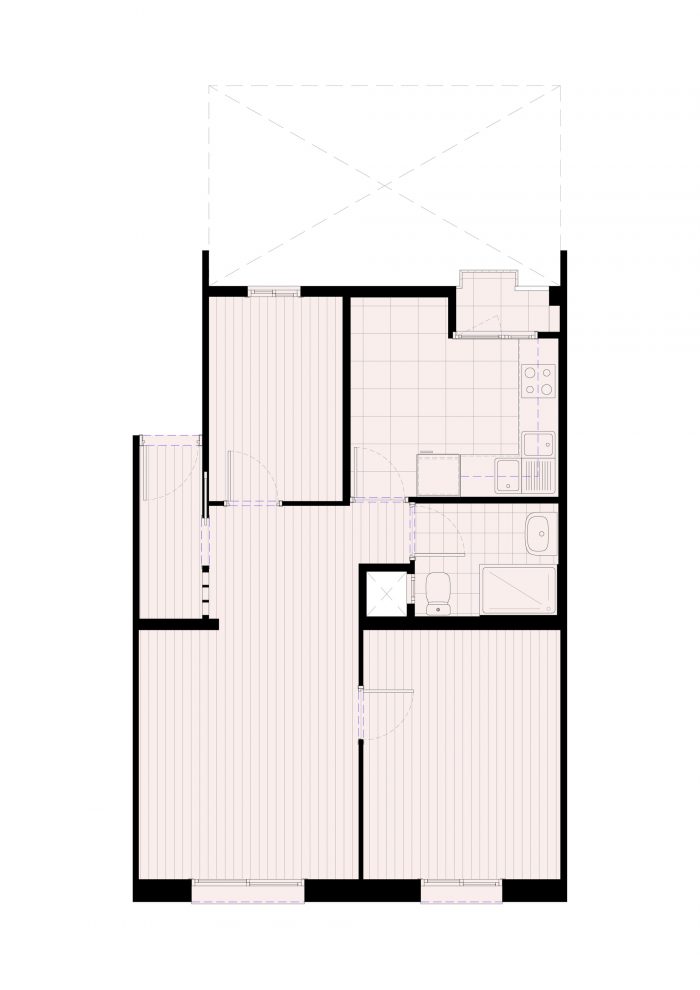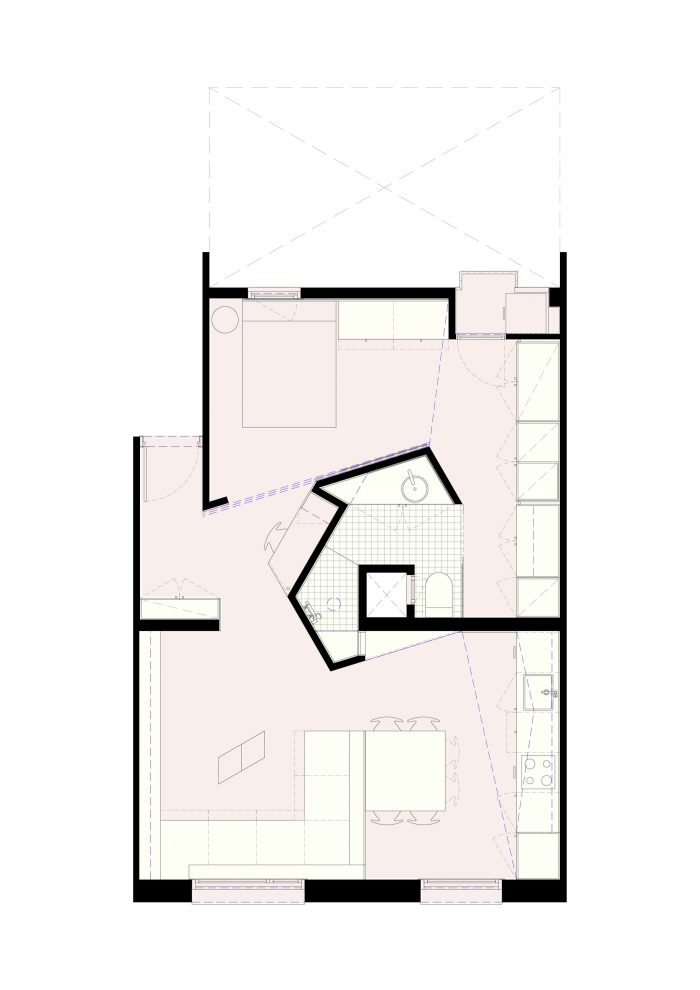房子位于巴塞罗那Eixample的Nova Esquerra社区的一栋建于1950年的大楼的二楼。该建筑每层楼有4个门,用于折价的中产阶级住房,建筑师F.J. Barba Corsini在市政工程档案的报告中这样描述。
The house is located on the second floor of a building built in 1950 in the Eixample’s Nova Esquerra neighborhood, Barcelona. The building has 4 doors per landing and is used for discounted middle-class housing, as described by the architect F.J. Barba Corsini in the report of the municipal works file.
房屋的结构由承重墙构成,有6个与街道平行的开口,包括4个立面:两个主要的和两个属于内部庭院的。楼层被中央的承重墙分成两部分,由一个小装置连接。房屋从一端进入,其主立面可以俯瞰街区的内院。它包括一个客厅-餐厅,一个厨房,两间卧室和一个洗手间,在一个传统的和破碎的空间里。总面积为47.59平方米。
The structure of the house is made of load-bearing walls, with 6 openings parallel to the street, including the 4 façades: the two main ones and the two belonging to the interior courtyards. The floors are divided into 2 by the central load-bearing wall, which is joined by a small installation. The house is accessed from one end and its main façade overlooks the inner courtyard of the block. It consists of a living-dining room, a kitchen, two bedrooms, and a restroom, in a conventional and crushed space. The total area is 47.59 m2.
该项目旨在消除投机性的分配,通过移除其中的一个房间,它得到了使用小的中央通风天井作为一个中心区域,围绕它进行旋转。
The project aims to eliminate speculative distribution and, by removing one of its rooms, it gets to use the small central ventilation patio as a central area around which to rotate.
在打算围绕中心流通的承重墙中提出了一个支撑点,其余的隔断被拆除。整合了承重墙和天井,提出了厕所的周围体积,在入口对面的隔断上有一个连续的厨房和橱柜条。
A shoring is proposed in the load-bearing wall that intended the circulation around the center, and the rest of the partitions are demolished. Integrating the load-bearing wall and the patio, the surrounding volume of the toilet is proposed, with a continuous strip of kitchen and cabinets on the partition opposite the entrance.
像往常一样,这个策略被居民拒绝进行任何类型的结构性干预而缩短,无论多么微小,都迫使我们在不失去其本质的情况下扭转这个项目。不方便并不妨碍解决计划中的方案,以及项目的独特特点:特别是要容纳业主收藏的1400多张CD和1200张黑胶唱片,这就是为什么要设计临时性的集成家具。
The strategy which, as usual, is cut short by the refusal of residents to carry out any type of structural intervention, no matter how minimal, forces us to turn the project around without losing its essence. The inconvenience does not prevent solving the planned program, as well as unique characteristics of the project: specifically, to accommodate the owner’s collection of more than 1,400 CDs and 1,200 vinyl records, which is why ad hoc integrated furniture is designed.
在材料和颜色层面上,唯一的外立面的东北方向使得地板的选择朝向一个清晰的表面,可以反射稀少的入射光线,而天花板的颜色被用作温暖和舒适的元素。这种色调延伸到浴室的多边形体积,软化了它的边缘,并与内部出现的蓝色调形成对比,并延伸到特定的点。金属元素对比并细化了房子的几乎乳白色和温暖的气氛。
On a material and chromatic level, the northeast orientation of the only exterior façade makes the choice of flooring towards a clear surface that allows reflecting the scarce incoming light, while the color of the ceiling is used as an element of warmth and comfort. This tone extends to the polygonal volume of the bathroom, softening its edges and contrasting it with a bluish tone that emerges inside and extends to specific points. Metallic elements contrast and nuance the almost milky and warm atmosphere of the house.
Architects: AMOO
Area : 506 ft²
Year : 2022
Photographs :José Hevia
Lead Architects : Aureli Mora, Omar Ornaque
Collaborators : Inès Martinel, Albert Renau

